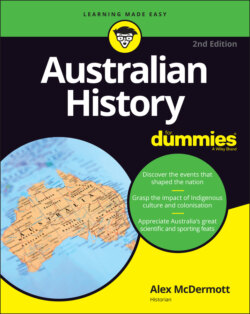Читать книгу Australian History For Dummies - Alex McDermott - Страница 28
Opening up the borders (mostly)
ОглавлениеAt the same time as the economic revolution, a sustained and at times ferocious debate was taking place over Australia’s cultural direction. When the White Australia Policy had been dismantled in the 1960s, it was done with loud public reassurances that ‘social homogeneity’ continued to be the key ambition informing immigration policy. Australia was welcoming immigrants from many diverse and new parts of the world, but the job of the immigrants was to adjust and assimilate. The thought that Australia could be genuinely enriched by these diverse new arrivals was slow to dawn in policy circles.
The big turnaround took place in the late 1970s, when Malcolm Fraser launched a policy of multiculturalism and also began accepting large numbers of predominantly Asian migrants — refugees from the Vietnam War (see Chapter 20). The idea behind multiculturalism — that it was okay for immigrants to want to retain their own culture while living in Australia, and that Australia might actually benefit from these cultures — was a shift in Australia’s approach to the world and its attitude to itself so profound as to be seismic.
By the late 1980s, the policy of multiculturalism was provoking murmurs of discontent. A report to the Hawke Labor Government concluded that the pendulum had now swung too far in the other direction — that many people were worried that embracing multiculturalism and diversity meant valuing and esteeming all other cultures and heritages but downgrading and devaluing Australia’s own, the core British–Australian culture that had provided all the building blocks for modern Australia.
The tensions came to flashpoint in the late 1990s, when resentment against the economic changes of the 1980s, the recession of the late 1980s and early 1990s, and suspicion about the influx of new immigrants coalesced into support for Pauline Hanson’s ‘One Nation’ political movement. This movement combined nostalgia for the certainties of old Australia with the rejection of economic and social revolutions refashioning Australia. In the short-term it was a short-lived phenomenon, dissipating as economic circumstances improved and something resembling boom conditions returned to Australian life for the first time in 30 years. But it was also a harbinger of some of the debates and divisions which would challenge Australia in the 21st century as well.
